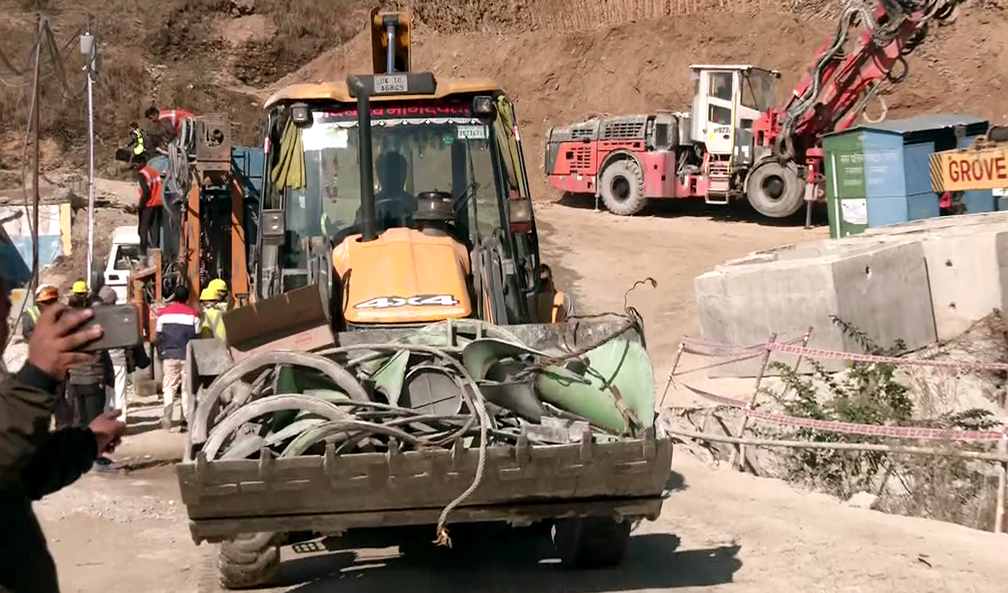NEW DELHI
The painful ordeal of 41 Silkyara tunnel workers during their rescue operation has exposed the gaps in standards for excavation and tunnelling and the need for better regulations for land use planning/zoning in the Himalayan states, especially in those areas that are more prone to landslides.
The Bureau of Indian Standard (BIS), which is responsible for framing and updating the building code, has been jolted by the Silkyara crisis—partly aggravated due to the absence of an escape tunnel for workers. The BIS is now looking to speed up the framing of the new building code that would include escape routes as a compulsory component of construction standards for tunnels and underground activities.
Also, the Ministry of Road and Transport has ordered a safety audit of all 29 under-construction tunnels in the country. The total length of these tunnels is around 79 km and 12 of these are situated in Himachal Pradesh, 6 in J&K, 2 each in Maharashtra, Odisha and Rajasthan, and one each in Madhya Pradesh, Karnataka, Chhattisgarh, Uttarakhand and Delhi.
The new proposed standards for tunnel construction would incorporate a compulsory provision for escape tunnel and an approach edit—which is a smaller tunnel running parallel to the main tunnel—with an opening at every 2 km. P.C. Nawani, who heads the BIS committee on geological investigation and subsurface exploration, said till now there was no compulsion for tunnel construction contractors to build an approach edit or a passage to safety every 2 km of the tunnel. The new draft guidelines will mandate all tunnel projects to have an escape tunnel, he said.
Interestingly, the Atal Tunnel in Himachal, which was built on a European pattern, has an escape tunnel under the main one. The escape tunnel can be opened every 400 metres. Technicians aware of the Silkyara project said work on it began in 2018 when there was no compulsion for the contractor to build an approach edit. The standards for tunnelling were changed in 2019 which said that for any tunnel longer than 1.5 km another parallel escape tunnel would have to be built compulsorily.
The Silkyara tunnel rescuers had 60 meters of debris between themselves and the trapped men. The workers have been trapped there since the 12 November cave-in. During this period, small 6-inch tunnels were drilled to reach the chamber in which the trapped workers were present. Food, water and medicine supplies were pushed into the tunnel for the workers’ survival through these small holes in the hill. The 4.5-km Silkyara bend, where the tragedy took place, is part of the two-lane bend that is part of the Barkot tunnel project, which was approved by the Union Cabinet in 2018. The Rs 1,383-crore project along NH-134 in Uttarakhand is running behind schedule and is likely to be completed in May 2024.
The Silkyara tunnel cave-in is the latest reminder for following safety procedures and the need for handling the ecosystem in mountains with care to prevent man-made disasters and casualties.
A parliamentary standing committee on water resources, which studied glacier management in the country—Monitoring of Glaciers/Lakes including Glacial Lake Outbursts leading to Flash-floods in the Himalayan Region—had also recommended earlier this year the need to lay down regulations for land use planning/zoning in the Himalayan states, especially in those areas that are more prone and susceptible to landslides.
The Committee, headed by Parbatbhai Savabhai Patel, noted that while a uniform code for the construction practices is contained in National Building Code of India (NBC 2016) published by the BIS, which comes under the Ministry of Consumer Affairs, Food & Public Distribution, as regards excavation, a policy on sediment management is at the drafting stage under the aegis of the Ministry of Jal Shakti.
“The Committee are of the view that regulating construction activities in Glacial Lake Outburst Flood/Landslide Lake Outburst Flood prone areas will go a long way in averting disasters and saving precious human lives,” said the parliamentary panel report. The Committee also expressed concern regarding occurrence of higher casualties due to changes in the architecture of the houses in the hills (the increasing use of brick and concrete instead of the traditional mud and wood).

